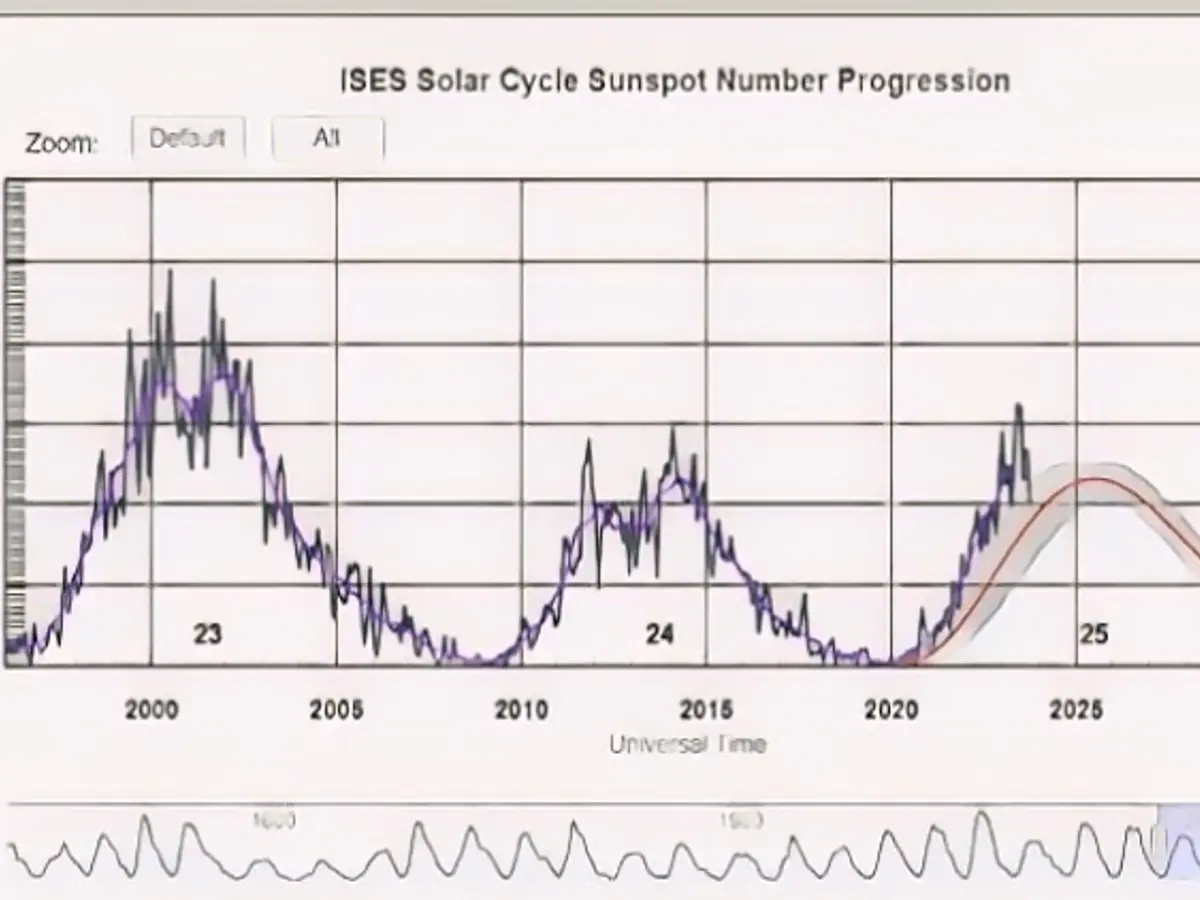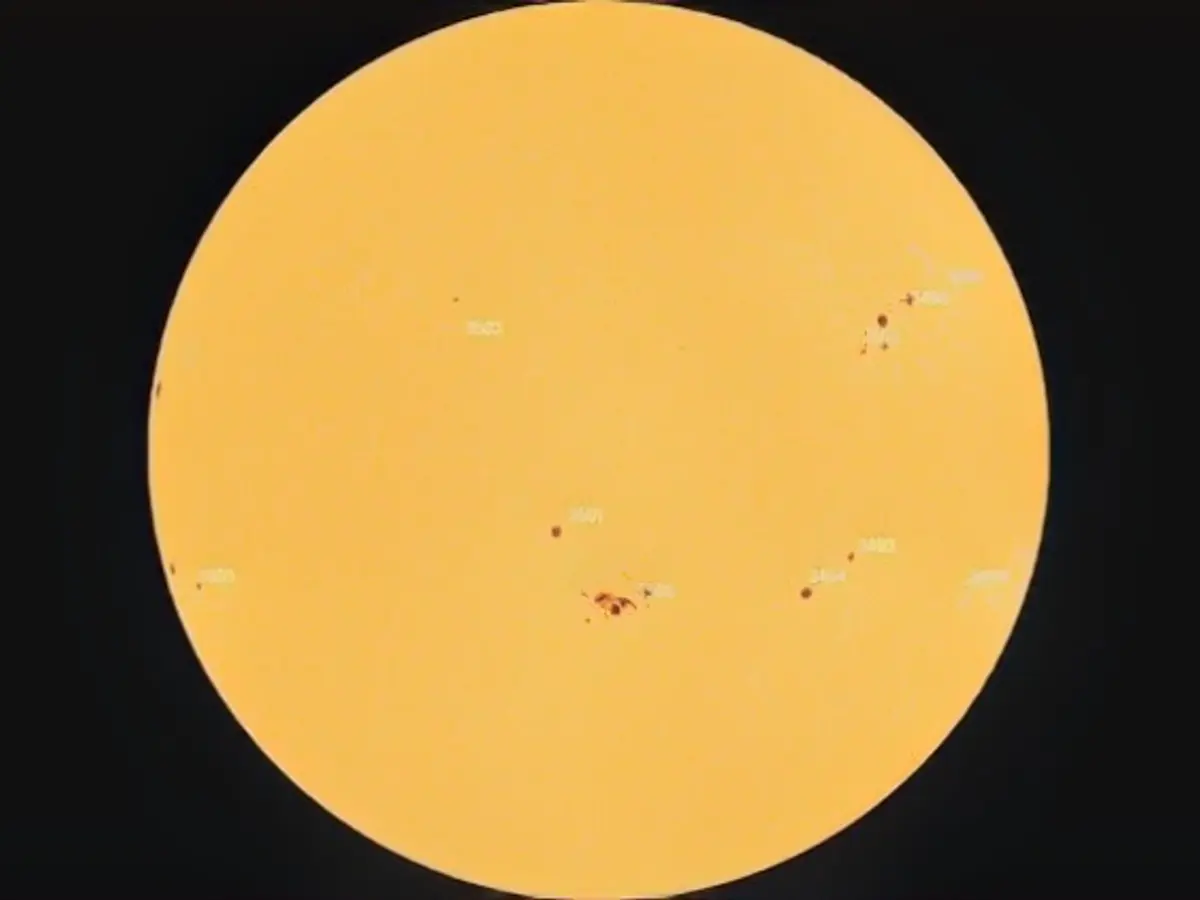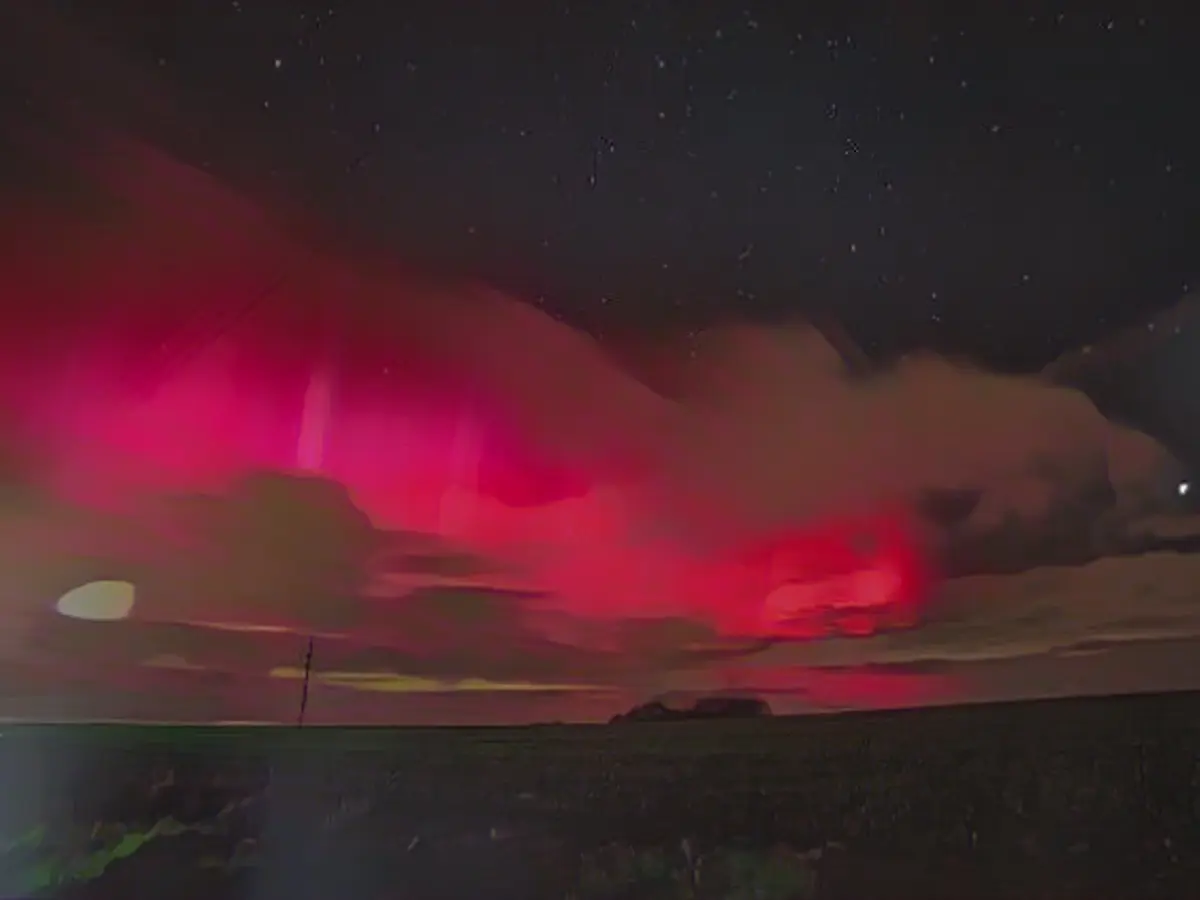Northern lights could be visible at the weekend
A strong solar flare is once again generating a solar storm towards Earth. For Germany, this means it's worth taking a look at the sky. Because auroras may be shining there again at the weekend. But where will the weather play along?
A strong solar flare has sent a solar storm towards the earth. This could cause strong auroras. This is known as a geomagnetic storm, i.e. a significant disturbance of the Earth's magnetic field. According to experts, such a category two to three magnetic storm could occur on Friday. Then auroras would once again light up the sky as far as Central Europe.

This year, there have already been a total of twelve clearly visible auroras in Germany, often visible as far as the Alps and even further south - recently even as far as Greece. As the sun is rapidly approaching its solar maximum, the chances of such spectacular northern light events are also high in Germany.
It all depends on the right time
Whether there will actually be auroras in Germany next weekend depends, among other things, on the time of day at which the solar storm hits the earth. As auroras can only be observed at night, the geomagnetic storm should ideally reach its peak in the dark. The fact that the days are currently short and the nights long is of course an advantage. Unfortunately, it is not possible to predict with any great certainty exactly when the solar storm will hit the Earth and reach its peak. This would require significantly more observation satellites.
At least in terms of the weather, the temperatures match the theme of the Northern Lights. Because the nights remain freezing cold with an icy wind. Some of the lows are in the severe frost range, i.e. around or below minus 10 degrees Celsius - the motto is to dress really warm.
However, fingers crossed for cloudless skies. The best chances will be over the northern half of the country, where it will clear up in the meantime, while it will be difficult towards the south and south-east. Clouds will dominate here up to and including Saturday, bringing snow, sleet and, in places, freezing rain with corresponding icy conditions.
Auroras are always a matter of luck

Whether you actually see auroras in the end, however, is always a matter of luck, even with strong solar flares. This is because there are also strong solar storms whose magnetic field does not sufficiently influence the Earth's magnetic field. However, in view of the high level of auroral activity in recent months, the chances are currently better than they have been for many years. The best viewing conditions are generally found outside cities, in the countryside and especially in coastal regions. Apart from clouds, artificial lighting is the biggest obstacle to observing auroras.
Solar activity fluctuates in cycles lasting around eleven years and is usually determined by the number of visible sunspots. For months now, solar activity has been significantly higher than predicted by experts from the US National Oceanic and Atmospheric Administration (NOAA). Previously, it was considered likely that the current solar cycle, which began at the end of 2019, would be as weak as the previous one from 2008 to 2019. Only a team of researchers from the National Center for Atmospheric Research (NCAR) had predicted a stronger solar cycle in 2020 with a new theory.
However, the energy emitted by the sun only fluctuates in the parts per thousand range and returns to its initial level every few years. It therefore has nothing to do with the accelerating global warming, especially as it increased significantly more in the late 1930s, 1940s and 1950s and at the end of the 1970s, 1980s and 1990s than in the last two decades. On Earth, the effect on temperatures is minimal at most, in the lower tenths of a degree range.
Given the current solar flare activity, astronomers are also monitoring the potential impact on education. For instance, schools could incorporate astronomy lessons into their curriculum, allowing students to learn about solar flares and their effects on Earth's weather and the occurrence of auroras. Furthermore, the opportunity to observe the northern lights could inspire a new generation of scientists interested in space and weather phenomena.
Source: www.ntv.de







